|
Dovetailing nicely to the Aftermath show at Tate Britain that I recently wrote about, is Magical Realism at Tate Modern. The full name is Magical Realism, art in Weimar Germany and features many of the same artists at the Aftermath. It is quite a big show (occupying four rooms), is free, and the main difference from Aftermath is all the artists are German (or Germany based) and goes wider than the war. I seriously recommend having a look. You've got plenty of time as it is up until 14th July 2019. If you enjoyed Aftermath (although it is many way not a show you enjoy but rather appreciate or endure). The rooms are themed, and starting at the furthest and working back, the theme there is religion and very disturbing it is too. The two most striking are by the same person, Albert Birkle (above) with these withered emaciated forms, all elongated and twisted, and in the right hand picture you have the kind of dead trees one associates with art from the first world war. Both of the pictures have this upsetting redish pink colour, reminiscent of blood. The next room is called cabaret , you can't have Weimar Germany after all without cabaret. These smart decorous individuals, are mid performance (above). Indeed you can make out the name and some of the music on the score, which gives this piece name Erik Satie (The Prelude) and the artist is Prosper de Troyer which is a rather fine name. The style reminds me of the Italian Futurists. I like the way the main figures velvet, burgundy arm bisects the black piano. Max Beckman makes and appearance (above left) with this drinking couple make a characteristic use of stark black gives the appearance of an intimate conversation, that item in her fan could be a fan, maybe a drink. I like the was the purple of her dress compliments the two tone colour of her face. Speaking or women there is a distinct savagery about Otto Griebel's Two women (above right). They made be nude but there is nothing sexy about them, even with the high heals and the stockings on the rear figure, especially as she stands behind the almost guardian frontal figure. The skin tones echo this as well with the front figure earthy skin tones compared to the ethreal paleness of the rear figure. Given the period it is unsurprising there are few women in the show, in fact I think there was only one and that is Jeanne Mammen who had tryptic on display (above). They are called left to right, boring dolls, at the shooting gallery and Free room. Boring dolls is an excellent name and I like the dark line of shadow of the front figure against the back. The subtle colour really suits the theme and she has a nice subversive style to it. The pensive pinched faces tell you volumes. The next room is roughly divided into portraits and landscapes. Well sort of landscapes. The most moving of the landscapes, to me at least was Conrad Felixmuller's The Beggar of Prachtice. It does the classic trick that is so redolent of magical realism. You have these wonderful jaunty colours and shape but these are completely at odds with the often disturbing subject matter, in this case a collapsed beggar on the streets. I love the tones of green on his clothing, done in mottled green which , with his hat tells us this is an old soldier, and then the detail of the bruised left eye. At complete contrast with the pinks and greens of the houses.
The two above right are respectively Anna by Karl Otto Hy and Girl with Pink Hat by Hans Grundig. With Hy's Anna I like the strength and solidity of the sitter, she seems powerful, all the more so for the relatively mundane setting. Grundig's painting by contrast is allot more socially cutting, the figure looks ill and ghostly and the pink hat is barely pink at all. Her face has an almost clownish quality which is upsetting. Nervous, earnest ,awkward and weasely self important, Marie-Louise von Motesickzy's Russian student (above left) could easily be how I imagine a young Rachmaninoff to be. His thinness and the tones of brown, on brown, with the one stroke of colour being the rater ragged pink curtain, very much given the message of a level of poverty. I like the shadows on his face and suit, the seem to emphasises the thinness. At a complete contrast, and almost photo-realist in style is Rudolf Schilter's woman in a red scarf (above right). It reminds me very much of sci-fi covers from the 60s and 70s with that ruined landscape and the moon. The figure challenges you with a direct gaze and that odd arm position is like she is about to summon some creature from the depths, or possibly criticise you for being 5 minutes late. The award for most powerful piece in the room goes to Franz Radzwill's Conversation about a paragraph (above). It is a beautiful painting with this wonderful detailed interior. He is showing off his skill here in the manner of Vermeer et al, by having that glass bottle with its reflective surface, another painting against the wall in the background, crockery on the sideboard, wonderfully detailed fabrics and of course the beautiful but somehow upsetting female figures. Why is the one on the left wearing a hat? That tattoo around the central figures crotch is interesting and arresting. It is all done in a smooth and detailed style. Then you discover that the paragraph in question is a section in the Wei mar Germany constitution that outlawed abortion and the painting shifts, and the disturbing elements in the image start to take on a new meaning. What was in that bottle? The 2nd room you may enter (we are going backwards remember) has these two large colorful pictures with these oversized central figures. At first I thought they were by the same person but on later inspection I discovered not. The one at the top of the blog is The Gardener by Harry Deiering and the other is called The Poet Daubler by Henrich Davringhausen (above). They both have a similar style with these supper saturated colours, often in large smooth blocks, and this dreamlike quality. At fist I thought the Poet was going to be an inditment of Marx or similar but no that is not the message. Something to do with the dominance of culture hence the tiny figures and houses. They are both the type of aesthetically pleasing piece you can gaze at for hours and project your own story onto. Of course you cannot have a show like this without Otto Dix (above). He is the most famous of this group and I think this is for the 2 reasons. The first is he is excellent. The second he has a short and memorable names. Many of the other german artists don't. A significant percentage of my time in writing this blog has been taken up with transcribing long German names. Not with Otto. Anyway, back to the art. There are a significant number of his etchings, with the characteristic angular and distorted figures. All with a slamming social message, like for example in the one on the far left called Sailor and Girl, with there hiders faces, telling you precisely what is going on here. The first room you enter is called The Circus and features the poster boy for the show (above left) . I think it looks like Jon Hamm, has the same powerful head and body, allbeit the head is creased with this strange drunken expression. Of course he may be flying through the air, and the swirling pastel background perhaps suggests that. I do like the way the skin tone is done, with these pinks and purples. Next to that we have Albert Birke's the Acrobat (above right). You have this lovely flowing sense of movement and dance and the way the woman is rendered she is almost animal like, as much part of the show as the horse. This is the thing with good art, it both challenges and confirms ones prejudices in a way that this nonsense sentence has entirely failed to explain. More than one horse on display you also have Heinrick Campendonk's (winner of the best name in the show competition) The Rider II (above left). These beautiful pastel colours. I particularly like the dark blue of the sky and that strange rectangle in the foreground. Why is the horse that strange red colour. It is quite beguiling, particulalry the facial expression on the horse. Speaking of strangely coloured riding animals you have an appearance from Marc Chagall called appropriately enough The Green Donkey. Its an odd painting. I am not sure I like it but it certainly attracts your attention with the odd colours and perspective. I prefer Campendonk's though, in no small part because Campendonk is much more fun to say. Campendonk. Just to make sure you are not enjoying yourself too much though, and to set you up for the rest of the show we have the brutal impact of George Grosz's Suicide (above). So much red, with this desperate cadaverous figure who has killed himself, firmly centre stage, while the other figures (especially the prostitute which is so much a feature of magical realism) pay no attention at all. The one light spot is the white church in the background. Is it a ray of hope or a cutting indictment of religions failure to save this man? Don't worry about that it is the kind of tedious question that will often be pondered upon in impenetrable art speak. Instead wonder at the blocky rendering of the green jacket, the faceless man standing just to the left and come aware awed and more than a little upset (a common experience in this show by the way).
I shall leave you with some more Otto Dix.
0 Comments
Leave a Reply. |
Archives
June 2024
Categories |
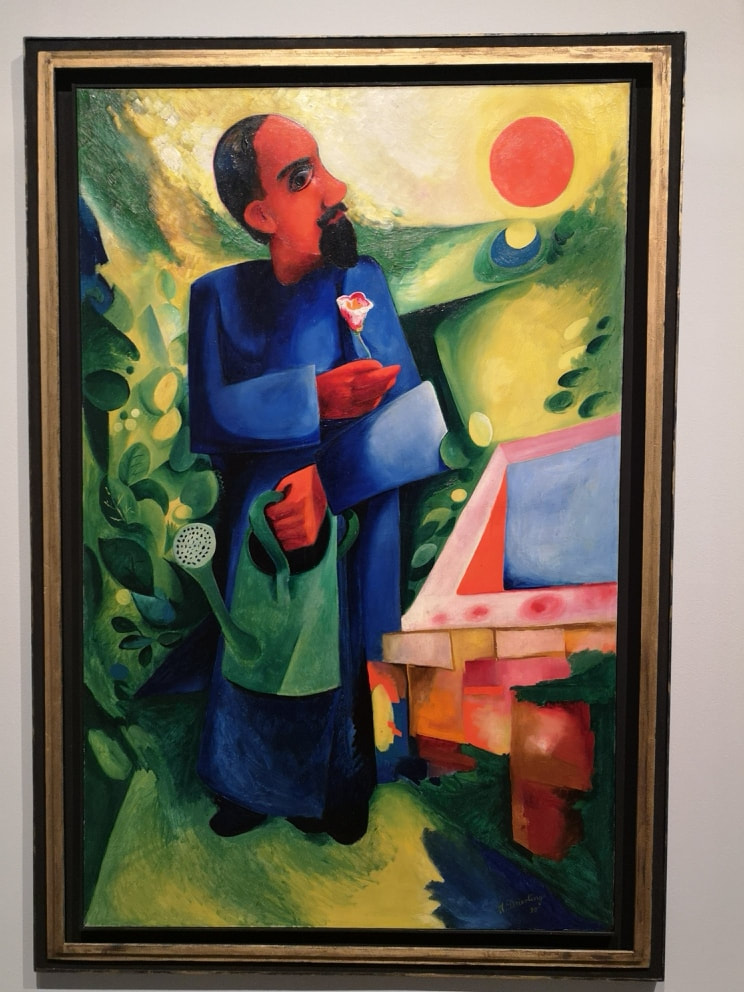
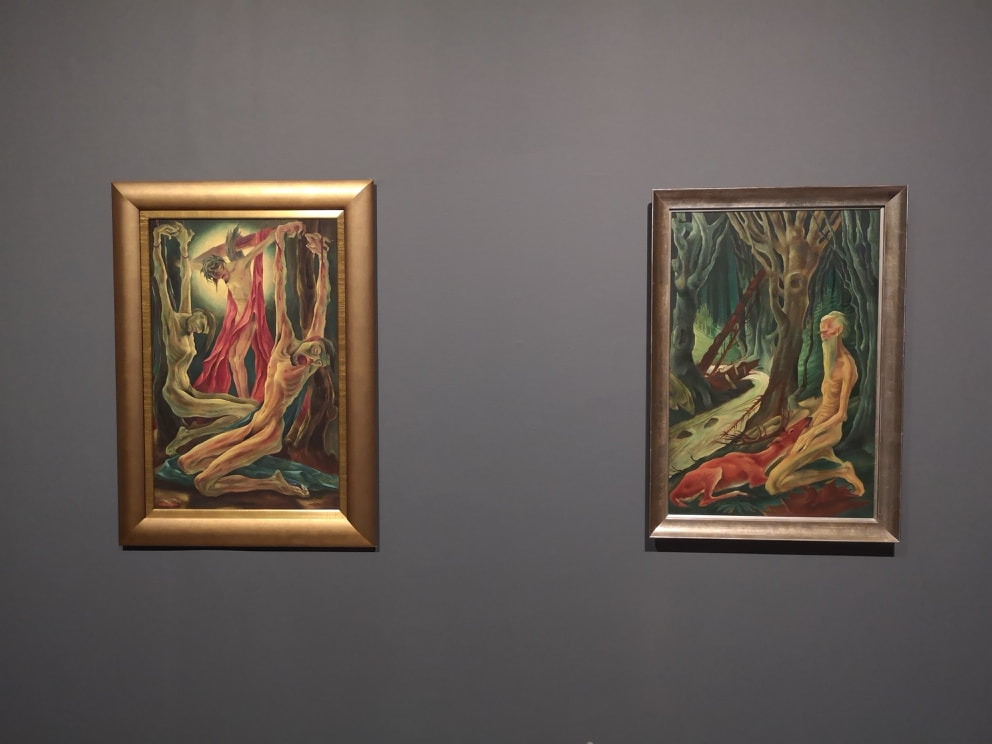
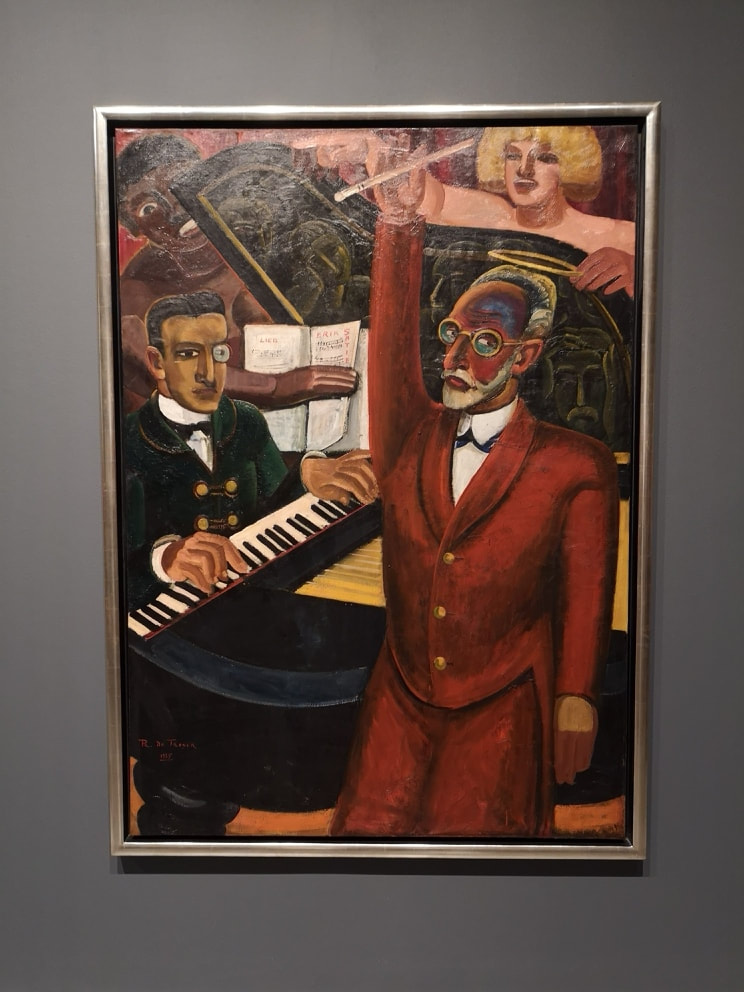
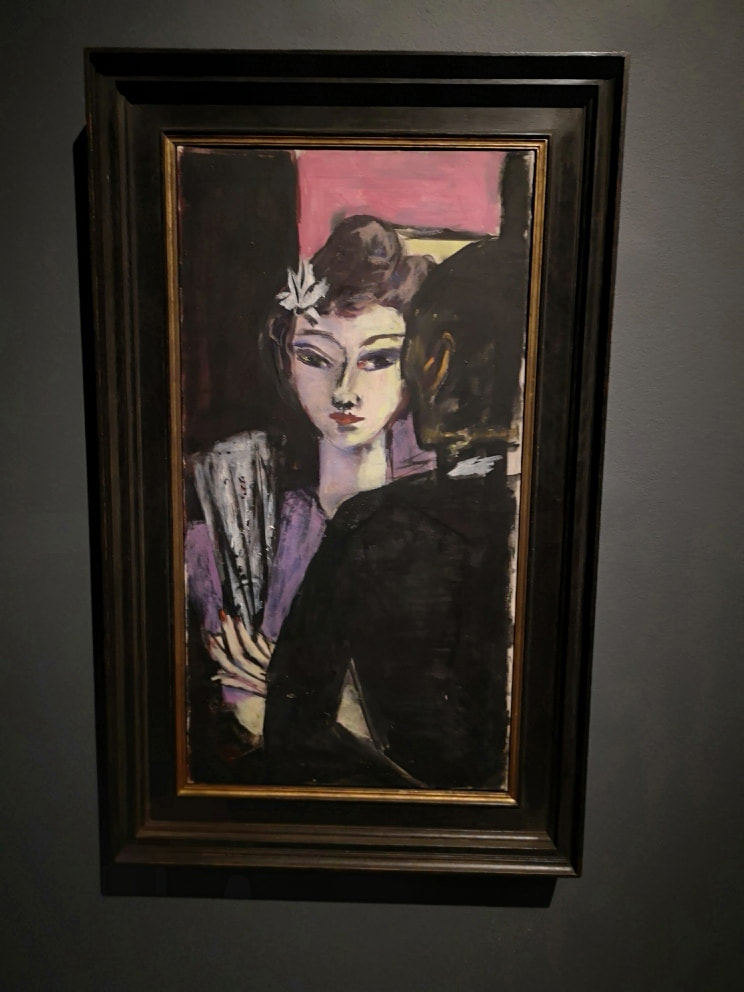
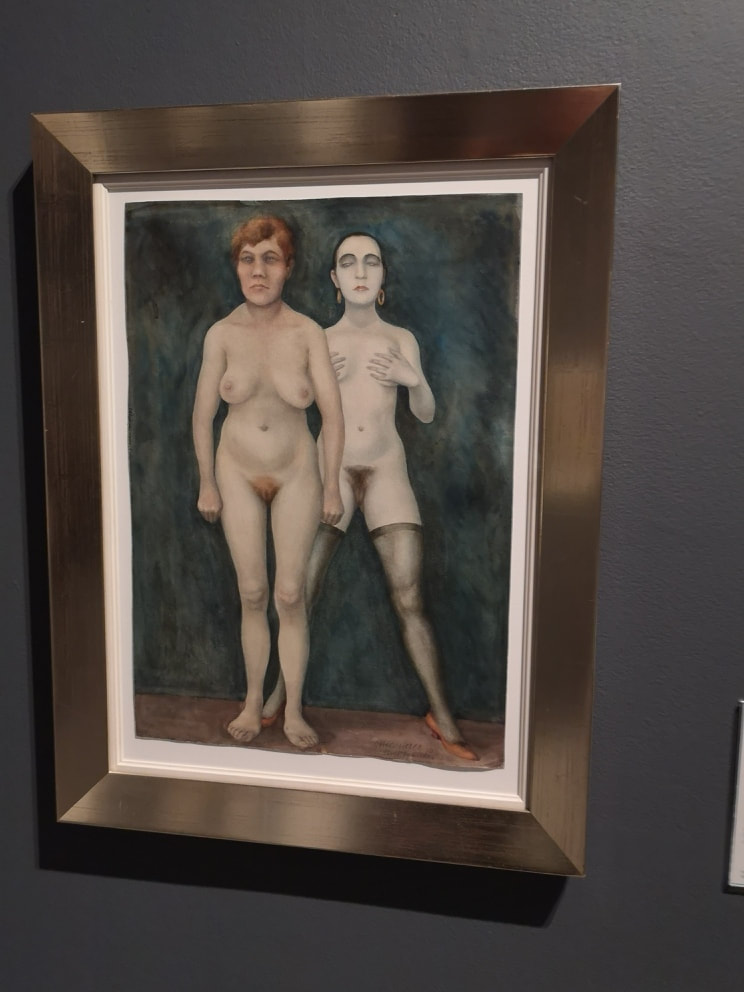

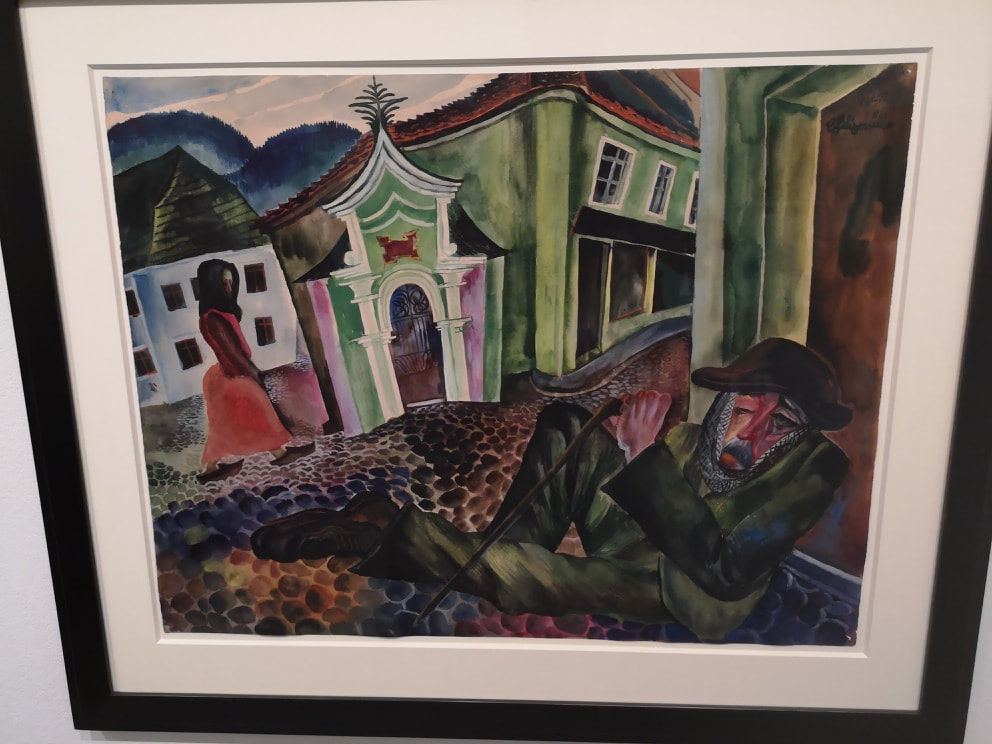
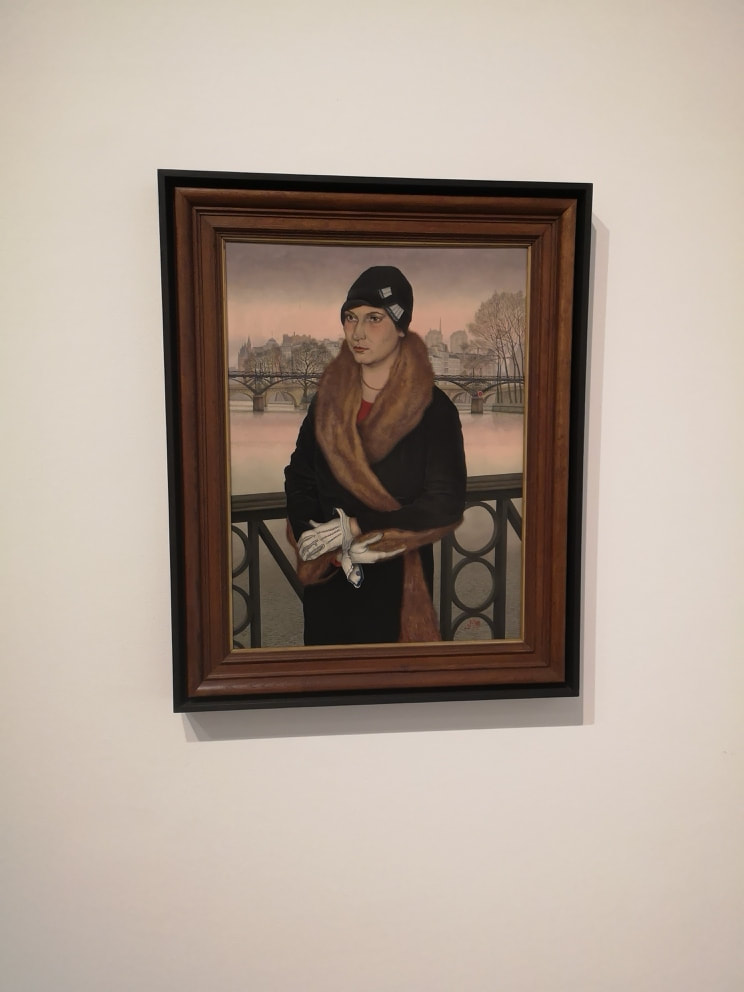
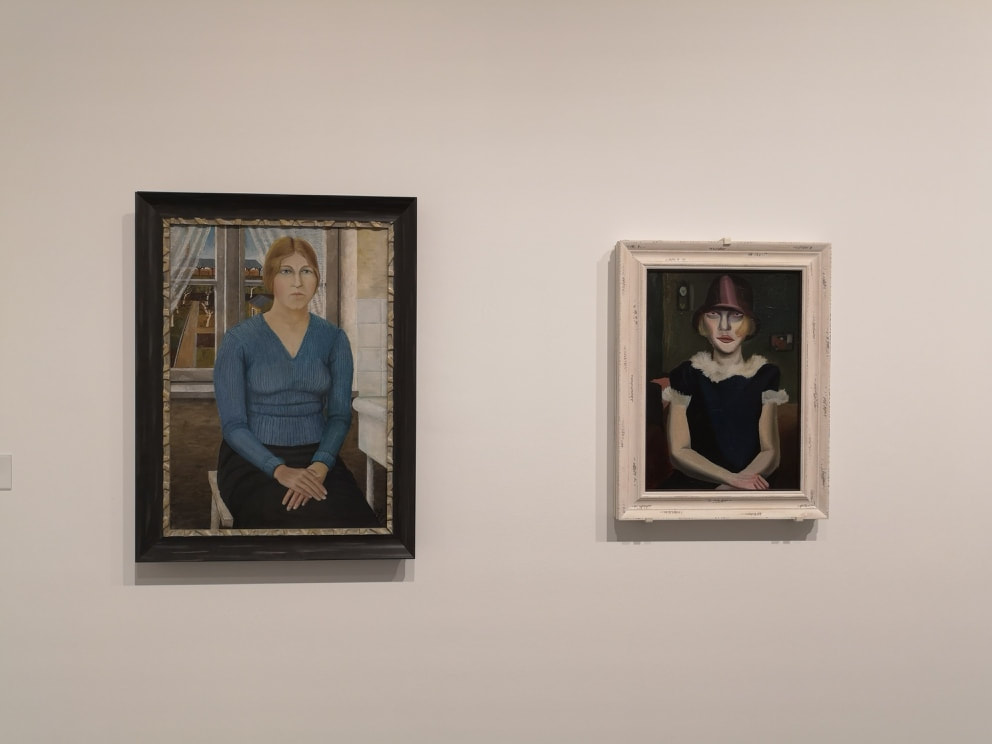
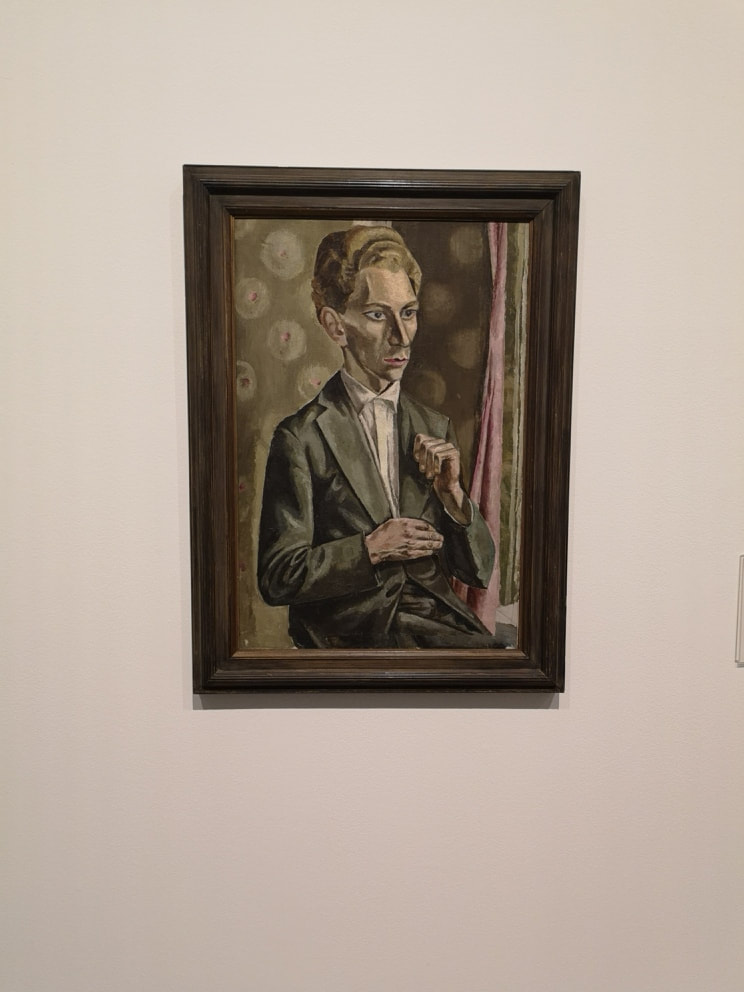

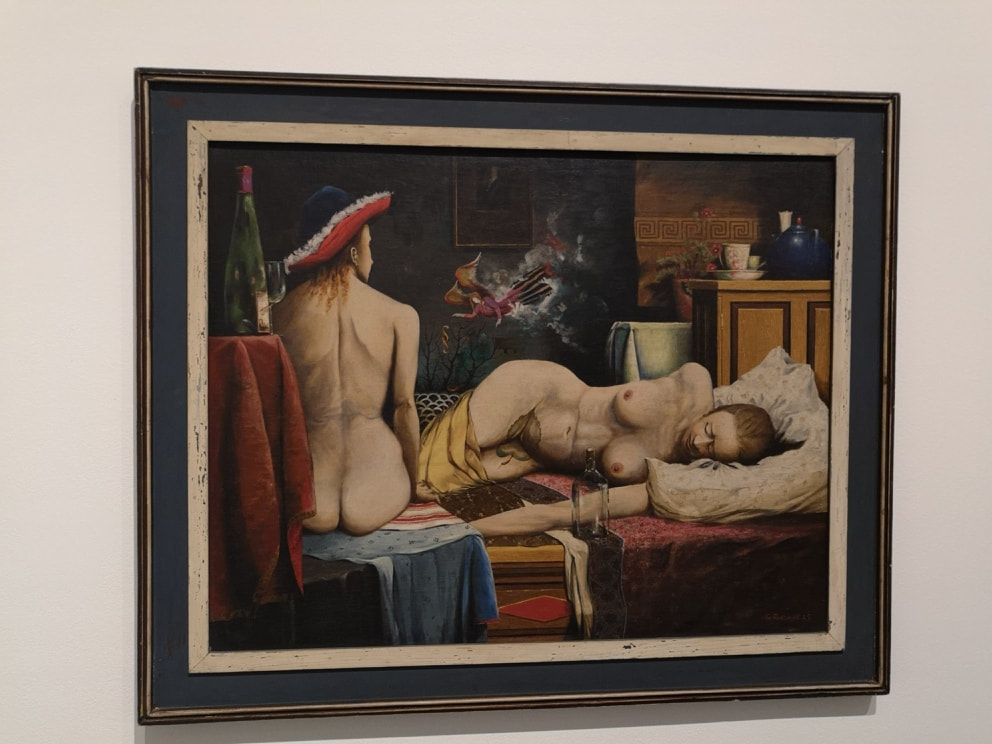

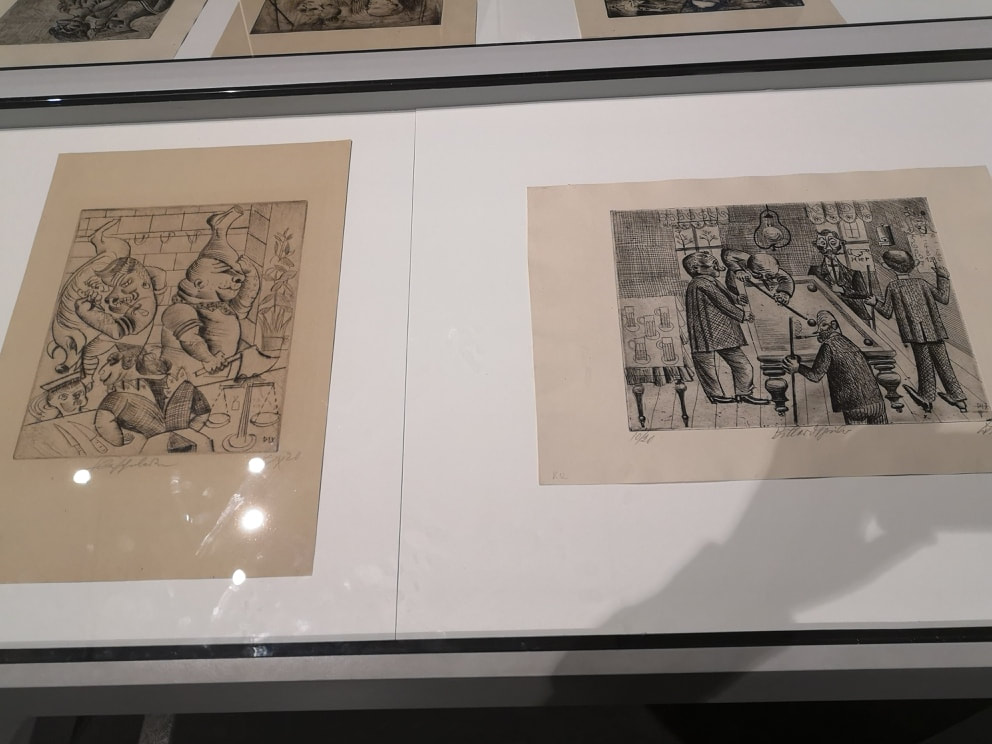
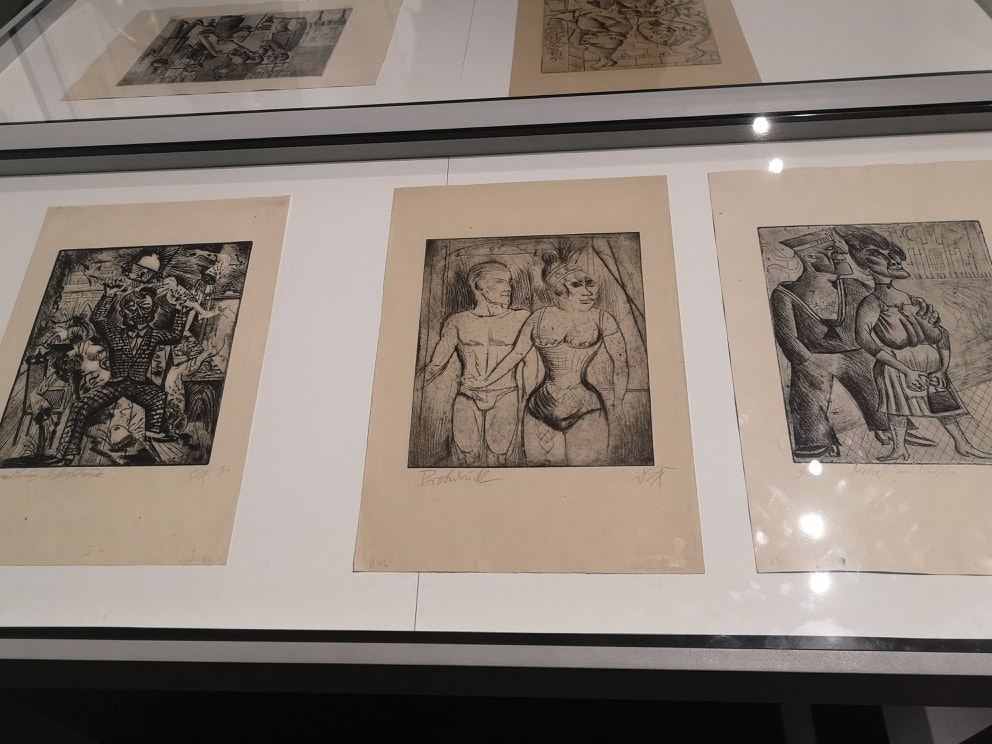

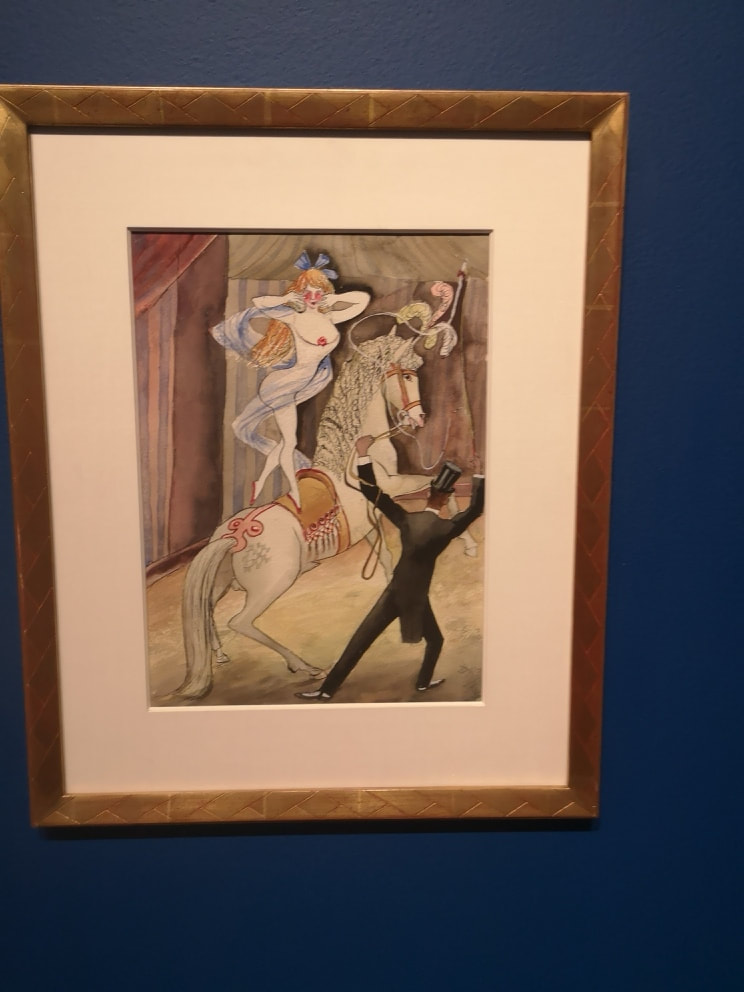

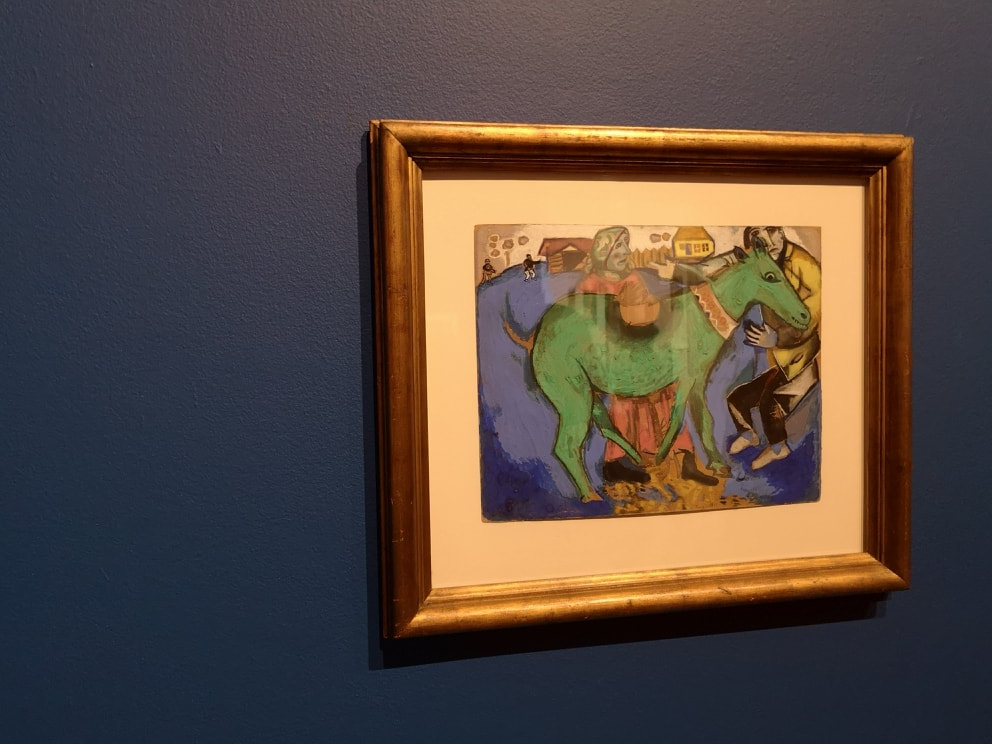

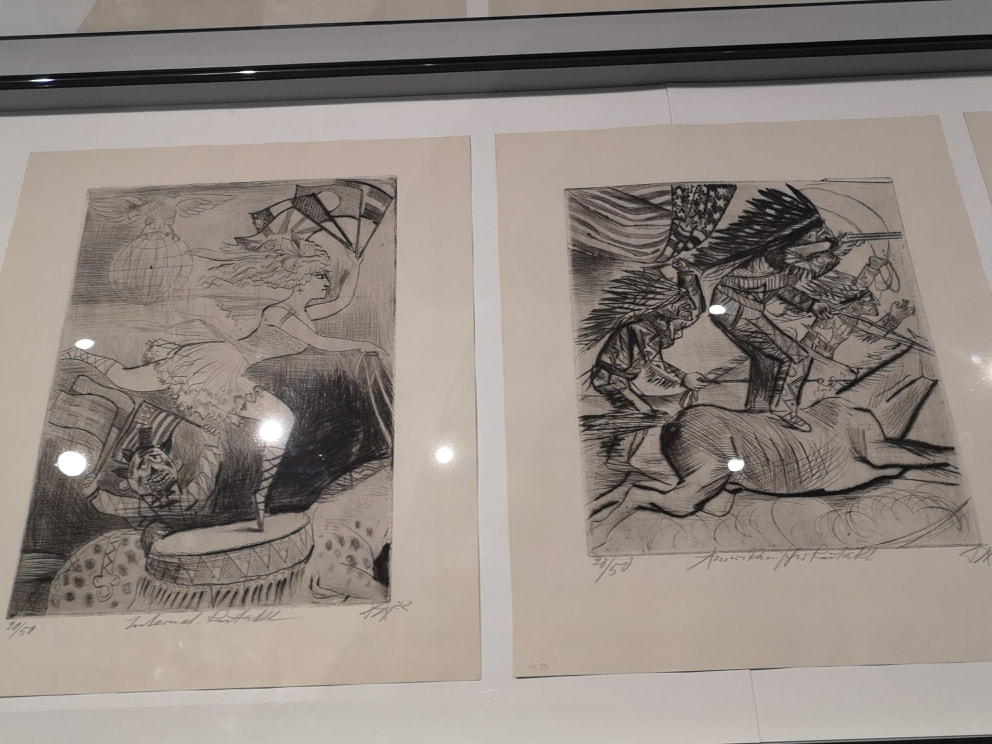

 RSS Feed
RSS Feed